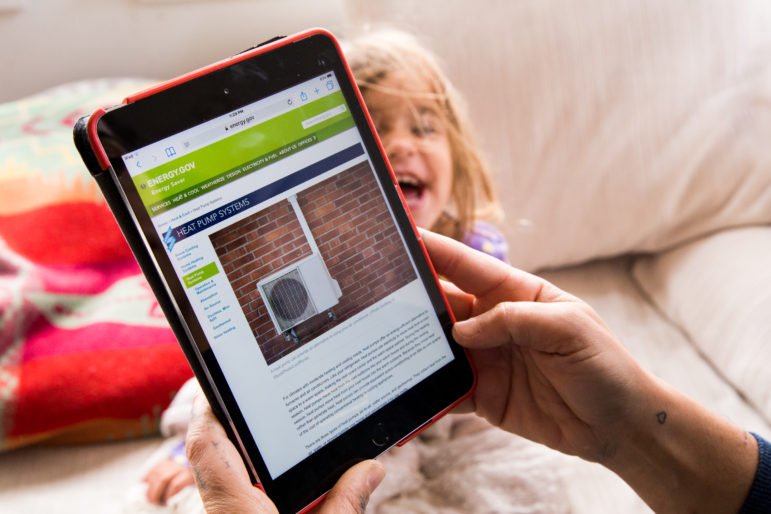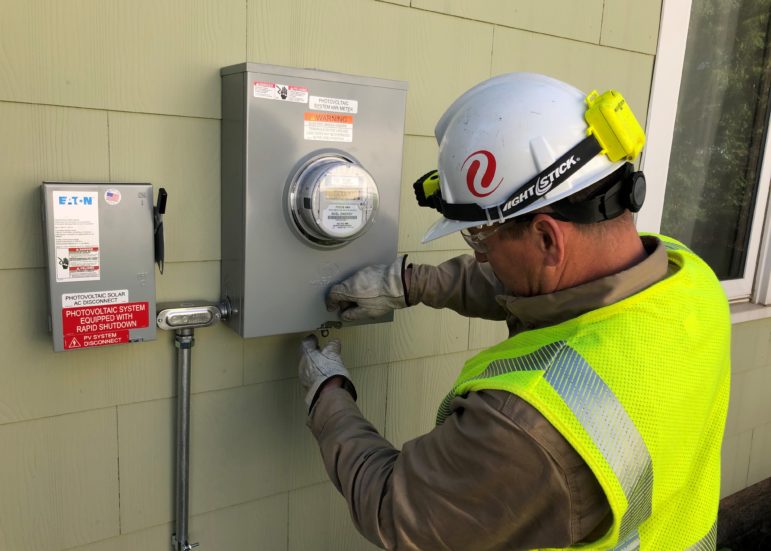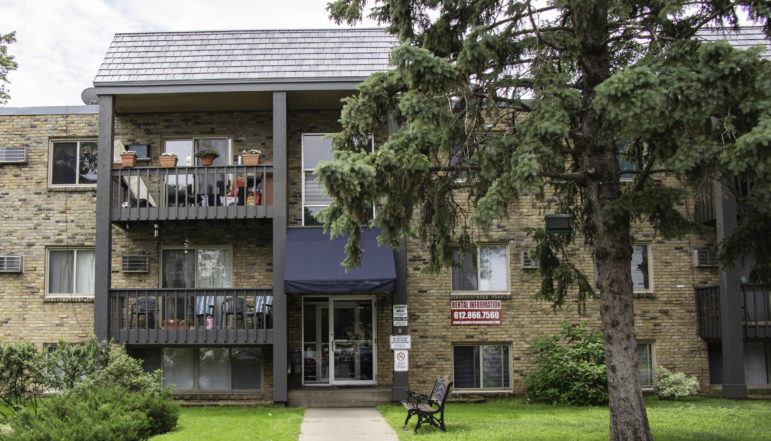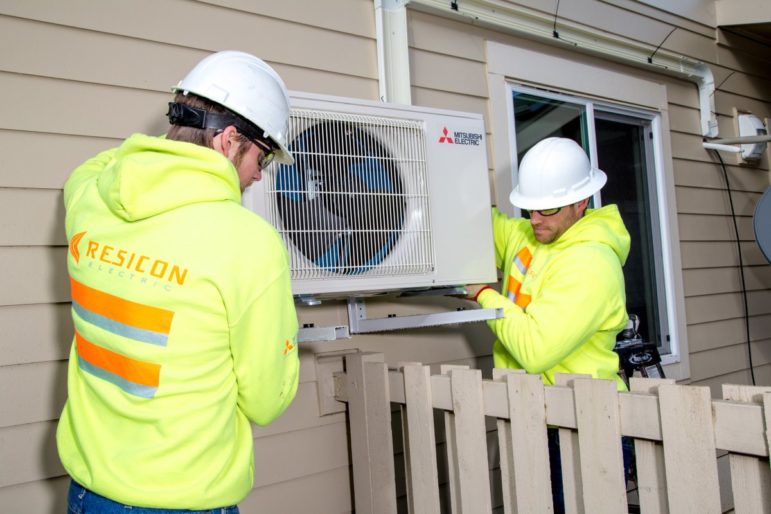
Earlier this year, the Minnesota Legislature passed the ECO Act, a bipartisan bill that was designed to update and expand the state’s nation-leading energy efficiency framework, the Conservation Improvement Program (CIP).
One of the most significant energy policies to pass the Minnesota Legislature in several years, the ECO Act has major implications for equitable clean energy programs throughout the state—but it isn’t the only policy that will shape how utility programs reach and serve communities (especially under-resourced communities, communities of color, and communities throughout Greater Minnesota) in the months and years to come.
Here is what you need to know about the future of equitable, modern energy efficiency in Minnesota:
1. Significant increase in investor-owned utilities’ spending requirement for programs serving under-resourced households

For several years, Fresh Energy and our Energy Efficiency for All (EEFA) partners have been working to increase utility spending on programs serving under-resourced households and rental properties. Historically, although Minnesota law requires utilities to spend a minimum amount on these programs (sometimes called the “CIP low-income spending requirement”), the dollars spent have fallen well short of the actual need.
Fortunately, the passage of the ECO Act requires a much-needed boost to utility spending to benefit under-resourced customers and will set minimum spending levels for investor-owned utilities (IOUs)—including the five largest IOUs, Xcel Energy, CenterPoint Energy, Minnesota Power, Minnesota Energy Resources Corporation, and Otter Tail Power—at a more equitable level. Electric IOUs’ minimum spending requirement will triple by 2024, and gas IOUs’ minimum spending requirement will increase by 2.5 times by 2022.
Here are the projected minimum spending requirements for the five largest IOUs as a result of the passage of the ECO Act:
| Electric Utility | Previous “low-income” spending requirement per year (source: 2021-2023 CIP Triennial Plans) | Projected new “low-income” spending requirement per year (by 2024)* |
| Xcel Energy (electric) | $2,383,732 | $7,151,196 |
| Minnesota Power | $223,392 | $670,176 |
| Otter Tail Power | $115,030 | $345,090 |
| Gas Utility | Previous “low-income” spending requirement per year (source: 2021-2023 CIP Triennial Plans) | Projected new “low-income” spending requirement per year (by 2022) |
| CenterPoint Energy | $2,407,512 | $6,018,780 |
| Xcel Energy (gas) | $1,138,374 | $2,845,935 |
| Minnesota Energy Resources Corporation (MERC) | $643,797 | $1,609,493 |
We expect the utilities to begin filing updated energy efficiency plans to incorporate these new spending levels later this year. It will be critical to ensure that spending results in additional energy savings and decarbonization opportunities for under-resourced households, and Fresh Energy and our partners look forward to reviewing the plans.
2. Allowable spending on pre-weatherization measures and health and safety issues

The ECO Act also allows utilities to spend a limited amount of their CIP funds (up to 15% of their budget for programs serving under-resourced customers) on “pre-weatherization measures” that would need to happen before energy efficiency or weatherization work can begin. The list of allowable pre-weatherization measures will be developed by the Minnesota Department of Commerce and finalized by March of 2022, but common examples include replacing knob-and-tube wiring (an older method of electrical wiring in buildings which has since become obsolete due to safety concerns) and removing vermiculite (a mineral that was used for older types of insulation that can cause respiratory complications and illnesses).
Allowing utilities to spend some of their CIP funds on pre-weatherization measures will help address the health and safety issues which disproportionately affect under-resourced households and Minnesotans living in older, less efficient houses and apartments. The need for pre-weatherization services before energy efficiency or weatherization work can begin typically prompts “walkaways” or deferrals because the energy efficiency service provider is unable to perform the work due to hazardous conditions in the home. Walkaway data are not publicly available for utility CIP programs but the Minnesota Department of Commerce recently reported within the federal Weatherization Assistance Program (a state-administered program that complements CIP and provides similar energy efficiency and weatherization services) that the walkaway rate includes up to 47% of participating homes in the state of Minnesota.
Allowing CIP spending on pre-weatherization is a significant improvement which will allow implementers and service providers to reduce program deferrals, potentially unlocking even more energy efficiency savings for the households who need it most.
3. Ensuring multifamily building eligibility in CIP programs serving under-resourced households

The ECO Act directs the Minnesota Department of Commerce to convene a stakeholder process to establish and update guidelines for the eligibility of multifamily buildings of five units or more to participate in energy efficiency programs serving under-resourced customers. The first stakeholder process is expected to occur later this year, and additional review and update processes must occur at least every five years thereafter, which will help establish clear benchmarks for evaluation to ensure that CIP programs continue to work for multifamily buildings—especially affordable multifamily buildings—in Minnesota.
This outcome was a significant priority for Fresh Energy and our EEFA partners, to ensure that multifamily buildings, and especially affordable housing, could continue to access the benefits of CIP programs serving under-resourced households. We look forward to supporting the Department of Commerce’s stakeholder process later this year.
4. Efficient fuel-switching and electrification programs

One notable provision of the ECO Act that Fresh Energy worked hard to have included authorized efficient fuel-switching within CIP, allowing utilities to further reduce carbon emissions and increase their energy efficiency offerings. The provision effectively removed a previous prohibition which had largely prevented utilities from using CIP dollars to convert measures such as water heaters and home heating and cooling from carbon-intensive fuels such as natural gas, propane, and fuel oil to run on clean electricity. Considering GHG emissions are increasing at the fastest rate across the building sector in MN, this is a big step for engaging utilities in building decarbonization efforts. Since 2005, emissions have increased by 32% from residential buildings and 15% from commercial buildings, primarily as a result of on-site combustion of fossil fuels like natural gas.
As utilities design and introduce new CIP program components that include efficient fuel-switching and electrification, it will be critical that these innovative elements are not just offered to under-resourced Minnesotans but that they also take their unique needs into account. Rate structures should be fairly and equitably designed to avoid unintended impacts to under-resourced customers, and housing of all types—including rental properties and multifamily buildings—must be included in new program offerings. The recent Minnesota Energy Efficiency Potential Study (2020-2029) found that significant energy efficiency potential remains in multifamily buildings and under-resourced households, with a sizable amount of savings coming from home heating measures including cold climate air-source heat pumps for building heating and cooling.
5. Potential future CIP updates
Explore the inclusion of meaningful “non-energy benefits:”
As energy efficiency programs expand and evolve, Fresh Energy believes a key lever that should be explored is more closely tracking, valuing, and incorporating “non-energy benefits,” or NEBs. While energy benefits refer to the reduced electricity and fossil fuel use resulting from energy efficiency programs, non-energy benefits refer to environmental, economic, health, and other impacts that can accrue from these programs. The magnitude of non-energy benefits can be substantial: two to five times greater than energy benefits, and more than 75% of total energy efficiency program impacts. What’s more, customers value highly non-energy benefits (like enhanced comfort, health, and safety) that can result from energy efficiency programs.
Minnesota currently values and incorporates some non-energy benefits (for example, avoided utility transmission and distribution costs and broader societal environmental impacts) in the evaluation of energy efficiency programs, but does not yet incorporate any of the participant-level non-energy benefits customers care most about. Accounting for more participant non-energy benefits could enhance energy efficiency programs for under-resourced customers by providing a means for ensuring that they are receiving the non-energy benefits they want from these programs, as well as encouraging utilities to design portfolios that deliver these benefits.
Continuing to develop CIP financial incentive updates:
Fresh Energy’s efforts with our EEFA partners to explore updates to the CIP financial incentive also continue. We look forward to continuing to work with the Minnesota Department of Commerce, our EEFA partners, and interested parties to advance opportunities to encourage deeper investments in energy efficiency programs serving under-resourced customers.
It is an exciting time for energy efficiency and optimization in Minnesota, with a significant amount of innovation and investment on the immediate horizon. Along with our partners, Fresh Energy is committed to ensuring that, in both process and outcome, under-resourced communities throughout Minnesota are equitably included in our state’s energy transition. Stay tuned for future updates!
Research volunteer Melissa Partin, PhD also contributed to this blog post. Melissa has provided invaluable insight into various non-energy benefit methodologies and other states’ efforts to make energy efficiency programs more equitable. Fresh Energy would like to thank Melissa for all of her great work!

